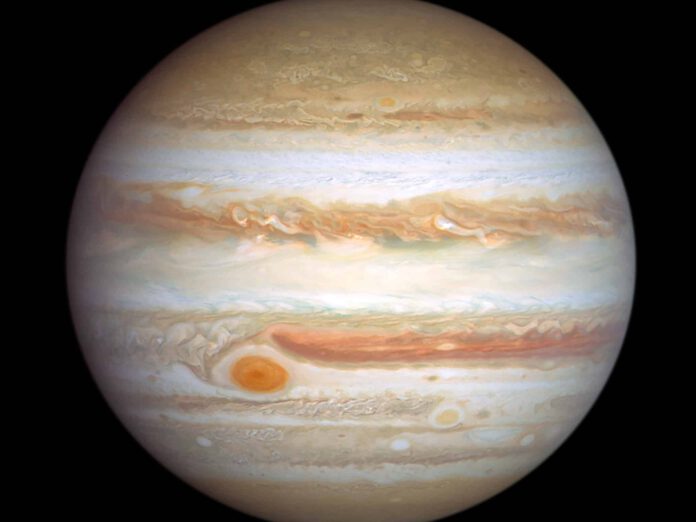
Cyclones, Anticyclones, and Massive Storms: A Cosmic Ballet on the Solar System’s Largest Planet
Space offers a remarkable spectacle, and none less so than the largest planet in our solar system. Known for its ceaselessly dynamic atmosphere, this colossal gas giant promises endless marvels.
The Hubble Space Telescope, humanity’s eye in the sky, regularly captures images of the gas planets in our solar system. Earlier this year, on January 5 and 6, the telescope turned its lens towards the magnificent Jupiter. Its atmosphere, primarily composed of hydrogen and helium, is interspersed with traces of methane, ammonia, hydrogen sulfide, and water. The highest cloud layer consists of ammonia ice. Beneath this lies a layer of compound known as ammonium hydrosulfide. Further still, roughly eighty kilometers below the cloud cover, there likely exists a cloud of liquid water. Variations in these upper clouds are responsible for the distinctive brown and white bands that we can observe from Earth.
The Unique Storm Systems of Jupiter
One of Jupiter’s most iconic features is the Great Red Spot: a storm system large enough to swallow Earth whole. Just slightly southeast of this gigantic maelstrom, lies a miniature version affectionately termed ‘Red Spot Jr’. This anticyclonic storm is the product of two separate storm systems that merged in 1998 and 2000. It first assumed its eponymous red hue in 2006. Since then, Red Spot Jr has kept its orbit while moving in a different direction from the Great Red Spot, the two passing each other every two years. With a keen eye, another anticyclone can be spotted slightly further north.
Dual Storms and the Most Volcanically Active Celestial Body in Our Solar System
The other side of Jupiter presents a seemingly more tranquil scene. However, a closer look reveals two more storm systems – a red cyclone and a reddish-brown anticyclone. Positioned side by side to the right of the center, these storms rotate in opposite directions – a telling sign of alternating high-pressure and low-pressure systems. To the left, one can glimpse Jupiter’s moon Io, the most volcanically active celestial body in our solar system. Earlier this year, the Juno space probe flew past Io, capturing numerous breathtaking images of its volcanoes and plumes.
For those interested in the full array of images, visit ESA’s Hubble site, a treasure trove of cosmic imagery.











